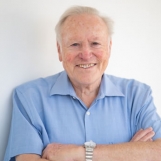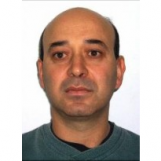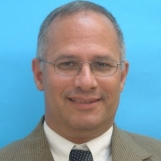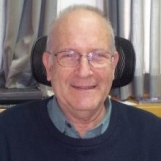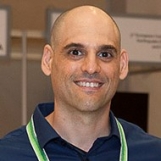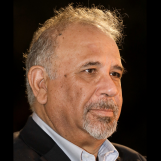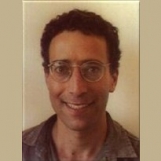3D Printed spacer fabrics (3DSF)
Knitted Spacer Fabrics (SF, AKA spacer mesh) have numerous uses in the fashion, automobile, safety industries, and more. Nevertheless, current SFs manufacturing suffers from some substantial limitations. The knitting machines are huge and very expensive, and the process requires a...
Categories:
Automation, Mobility and Aerospace|Chemistry and Materials|Information and Computer Science|Medical Devices
A new hydrothermal treatment of metal parts – experimental proof of concept
Metals might develop cracks and holes during the manufacturing process. 3D printing renders parts very prone to such defects. Other manufacturing methods may create such defects as well. Defects may also form while the parts are in use. This affects...
Categories:
Automation, Mobility and Aerospace|Chemistry and Materials
Acoustic localization and mapping of multi-rotor vehicles
A self-localization system for multi rotor drones . Localization is based on analysis of acoustic signature of returned acoustic signals as a result resulting from reflections from nearby objects. The transmitted acoustic signal is derived from rotor rotation. Advantages Localization...
Categories:
Automation, Mobility and Aerospace|Information and Computer Science
Acoustic resonance excited heat exchange
Towards enhancing the efficiency of gas turbines, most thermodynamic cycles require heat to be either added or dissipated by a heat exchanger, which operates by associating two streams of different thermal potential. Due to form factor limitations of many size...
Categories:
Automation, Mobility and Aerospace|Sustainability and Energy
As the operational envelope of unmanned air vehicles expands into the high sub-sonic and transonic speed range, the engine design process requires compromises in thrust, weight, fuel consumption, size, reliability, and manufacturing cost. Moreover, the engine requirements for multiple operating...
Categories:
Automation, Mobility and Aerospace|Security & Defense
Advanced failure analysis and design optimization for soft materials
Soft materials such as rubbers, elastomeric composites, hydrogels, and shape-memory polymers are integral to modern engineering, powering applications across automotive, aerospace, electronics, and biomedical industries. Yet despite their versatility, conventional testing and modeling methods often fail to capture their complex...
Categories:
Automation, Mobility and Aerospace|Chemistry and Materials|Security & Defense
Cloud BIM – collaborative platform for building professionals
The fragmented nature of the construction industry necessitates close collaboration among design disciplines and requires extensive data exchange. Despite advances in Building Information Modeling (BIM) technology, teams still rely on a sequential file-based process for design exchange, resulting in issues...
Categories:
Automation, Mobility and Aerospace|Information and Computer Science
CMOS-SiPM array for ToF measurements
Ultra-sensitive light detection systems are increasingly being employed in applications such as mobile range finding, automotive ADAS (Advanced Driver Assistance Systems), gesture recognition, 3D mapping, security, etc. There is an increasing need for "Super-Camera" which is capable of producing two-dimensional and...
Categories:
Automation, Mobility and Aerospace|Information and Computer Science|Physics and Electro-Optics
Decision making under uncertain conditions
A system and methods are provided for decision making under uncertainty, for selecting an optimal action from among multiple candidate actions in belief space planning (BSP). BSP is a scalable approach for planning under uncertainty. Today, the two processes, inference...
Categories:
Automation, Mobility and Aerospace|Information and Computer Science
Delamination of multilayers films and packages
Every year, millions of tons of multilayer laminate materials—like food packaging, coffee bags, paper cups, juice cartons, and even solar panels—are either incinerated or landfilled due to the lack of an industrial method for separating their tightly bonded layers. These...
Categories:
Automation, Mobility and Aerospace|Chemistry and Materials|Food and Agriculture|Sustainability and Energy
Detecting far objects using a 3D optic system
Today, radar or stereoscopic systems are used when distance estimation is required. Radar systems require expensive equipment. Methods that are based on triangulation require 2 cameras. As the object distance increases, the distance between the cameras has to increase. In...
Categories:
Automation, Mobility and Aerospace|Physics and Electro-Optics
Direct injector of hydrogen or hydrogen-rich gaseous fuel
Current hydrogen rich fuel direct injectors suffer from low flow cross section, non-reliable closure and a non-optimized jet structure, which have a detrimental effect on the engine performance. Achieving higher flow rate, shorter open-close timing and higher backward pressure resistance...
Categories:
Automation, Mobility and Aerospace|Sustainability and Energy
Displays from space using swarms of nanosatellites
Nano-satellites for forming signs enable easy display of changing signs over different territories and time windows. Known solutions require large satellites and expensive deployment mechanisms and resources. This technology deploys an array of nanosatellites for display forming which allow for...
Categories:
Automation, Mobility and Aerospace|Information and Computer Science
DXAI explaining classification by image decomposition
The increased use of AI in critical applications such as automotive, healthcare, military, increases the importance of Explainable AI (XAI) - transparency tools that provide clear insights into model decision-making. This invention allows an ultra-fast XAI based on simplified inference,...
Categories:
Automation, Mobility and Aerospace|Security & Defense
Elephant trunk (robotic mechanism with two degrees of freedom)
The present invention relates to the field of robotic actuated mechanisms, especially those having a high load lifting capability and light weight, such that they are capable of being stacked end-to-end to provide a hyper-redundant, high flexibility, long robotic arm....
Categories:
Automation, Mobility and Aerospace|Medical Devices
Engine design based on novel thermodynamic cycle
Internal combustion engines (ICE) will remain main propulsion technology for various applications for many years. However the challenges are security of energy supply, climate change issues and air pollution. Combined electro-thermo-chemical technology goal is to deal with all those issues...
Categories:
Automation, Mobility and Aerospace|Sustainability and Energy
Flexible ultra-light weight conductors
Copper has been used in electrical wiring since the invention of the electromagnet and the telegraph in the 1820s. Standard copper wires are being used for numerous applications reliably for many years. However, as technology changes requirements from the current...
Categories:
Automation, Mobility and Aerospace|Chemistry and Materials|Sustainability and Energy
Green corrosion resistant conductive coatings for magnesium alloys
Conductive coatings are of great importance for applications including dissimilar metals joining which needs continuous electrical conductivity as part of design considerations. Magnesium has galvanic corrosion with any other metal. Therefore, it's impossible to use metallic layers on magnesium as conductive...
Categories:
Automation, Mobility and Aerospace|Chemistry and Materials
H2 production by electrocatalysis assisted by Peptoid complex
Water splitting is an important process towards the generation of H2 as a renewable and sustainable energy source; however, the high overpotential and slow kinetics limit its applicability. Most current photo- and electro-catalysts are expensive to make, not environmentally friendly...
Categories:
Automation, Mobility and Aerospace|Chemistry and Materials|Sustainability and Energy
Highly stable membranes for alkaline fuel cells and electrolysers
Alkaline fuel cells and electrolyzers offer many advantages over their acidic counterparts, the main one being the possibility to replace precious metals in electrodes with other, low cost and abundant metals. However, the alkaline environment leads to substantial electrolyte decomposition...
Categories:
Automation, Mobility and Aerospace|Chemistry and Materials|Sustainability and Energy
Hydrogen and electric energy production on-demand
Hydrogen storage and transportation is both inefficient and hazardous. Hydrogen production by reaction of water and activated aluminum can be done on demand and on the location where the hydrogen will be used. The weight of hydrogen produced is 11%...
Categories:
Automation, Mobility and Aerospace|Sustainability and Energy
Lithium-ion battery (LIB) is the most widely used energy storage device for portable consumer electronic devices, electric vehicles, and electric grids. Additionally, LIBs have become emerging devices to store renewable energy (i.e., wind, solar, geothermal). Due to the widespread use...
Categories:
Automation, Mobility and Aerospace|Chemistry and Materials
Lightweight avionic parts such as wings and even aircraft body as well as high specific strength parts for seacrafts, automotive, wind turbine and other parts with demanding mechanical requirements are usually made of a laminate of skin which may be...
Categories:
Automation, Mobility and Aerospace|Chemistry and Materials
Long duration Vacuum Arc Thruster for nanosatellite propulsion
Researcher:
Dr. Igal Kronhaus
A reliable, non-magnetic, long lived Vacuum Arc Thruster (VAT) - the inline screw feeding vacuum arc thruster (ISF-VAT) is a mechanically controlled feeding mechanism. The feeding mechanism moves the cathode towards the exit plane in a helical path. This enables...
Categories:
Automation, Mobility and Aerospace
Low power hall thrusters
Researcher:
Dr. Igal Kronhaus
Hall thrusters, also known as closed drift accelerators, are very successful electric propulsion (EP) systems commonly used for spacecraft propulsion. Hall thrusters have good attributes, however they are designed to operate at power levels above 300 W - not suitable...
Categories:
Automation, Mobility and Aerospace|Security & Defense
Measurement of coating thermal properties
Thermal barrier coatings (TBCs) are engineered to provide sustained thermal protection to engine components that are exposed to excessive heat load. In the wake of this application, a reliable, non-intrusive and quantitative thermal property measurement method is in high demand...
Categories:
Automation, Mobility and Aerospace|Physics and Electro-Optics
Message authentication based on physical location on a bus
Researcher:
Prof. Eli Biham
With the ever evolving connectivity and functionality of devices, systems, infrastructures and/or the like, cyber-attacks and cyber threats may present a major and ever growing security concern for multiple networks, systems and infrastructures. Potential malicious attackers may penetrate a network...
Categories:
Automation, Mobility and Aerospace|Information and Computer Science
Metafoils – morphing airfoil skins
In all conventional aircraft this change of shape is achieved by mechanical servo motors which provide angular or linear motion so as to tilt a rigid portion of the wing or lifting device. Aircraft manufacturers are attempted to develop planes...
Categories:
Automation, Mobility and Aerospace
Microstructure control of ceramic matrix nanocomposites
Ceramic matrix nanocomposites have interesting advantages over their monolithic counterparts. These composites are based on a micron-sized ceramic matrix reinforced with metal or ceramic sub-micron or nanometer-sized particles as a second phase. One of the main goals of reinforcing the...
Categories:
Automation, Mobility and Aerospace|Chemistry and Materials
AI based Optimization scheme for MIMO /Array RADAR systems reducing complexity and cost by optimizing antenna and transmitter/ Receiver topology and reducing the overall number of Transmitting/ Receiving blocks. Advantages Cost and power reduction of RADAR systems Size reduction Applications...
Categories:
Automation, Mobility and Aerospace|Information and Computer Science
Mold-less molding additive manufacturing of volumetric objects
Traditional additive manufacturing methods such as 3D / 4D printing, Selective laser sintering (SLS), Stereolithography (SLA), Digital light process (DLP) and Volumetric additive manufacturing (VAM) are powerful tools for prototyping, but they’re limited by slow build speed and inhomogeneous mechanical...
Categories:
Automation, Mobility and Aerospace|Chemistry and Materials|Medical Devices|Sustainability and Energy
Online single and multi-agent decision making under uncertainty
Autonomous decision making under uncertainty is a fundamental problem in AI and robots, and is essential in numerous practical applications. Novel approaches are provided for decision making under uncertainty, for determining optimal actions online for single and multi agent systems...
Categories:
Automation, Mobility and Aerospace|Security & Defense
Piezoelectric devices with obliquely aligned electrodes
There exist many mechanical designs of piezoelectric unimorph actuators that can generate various motions other than conventional in-plane motions. Such devices are used to generate deflections or bending, twisting or torsional motion, and parallel out-of-plane motion, for use in micro-electromechanical...
Categories:
Automation, Mobility and Aerospace|Physics and Electro-Optics
Post-functionalization mechanophores via Click Chemistry
The autonomous detection of mechanical stress in plastics and polymers (both biological/natural and synthetic) traditionally requires the incorporation of mechanophores (force-sensitive molecular probes) during the chemical step - polymerization, and therefore does not allow for incorporation after processing. In addition,...
Categories:
Automation, Mobility and Aerospace|Chemistry and Materials|Pharmaceuticals and Biotechnology
Probabilistic object classifications
Object detection and classification is a component of situational awareness important to many autonomous systems and robotic tasks. The mobility of robotic systems is widely exploited to overcome limitations of static, one-point-of-view approaches to measurement classification. These limitations may include...
Categories:
Automation, Mobility and Aerospace
Protection layer for battery electrodes
In Li-ion batteries electrode materials degrade through their reactive interface with the electrolyte. The undesirable interfacial reactions result in formation of layers that impede charge transfer and can serve as an active site for electrolytic consumption, electrode corrosion and passivation,...
Categories:
Automation, Mobility and Aerospace|Chemistry and Materials|Sustainability and Energy
Recycled, 3D printed wood products for the construction industry
The construction industry is one of the most polluting industries, mostly due to concrete and plastic usage. To reduce construction related pollution and waste, one of the possible solutions is to increase the use of Recycled Wood & Polymer Materials...
Categories:
Automation, Mobility and Aerospace|Chemistry and Materials|Sustainability and Energy
Reinforcement learning of robotic control policies
Robots are expected to propagate over different terrains. There is a growing need to provide a method for controlling a movement of a robot that is robust, can allow the robot to propagate over terrains with positive and negative slopes,...
Categories:
Automation, Mobility and Aerospace|Information and Computer Science
Road traffic forecasting system
Setting complex traffic light plans is a must as intersections are becoming more complicated and crowded. Current plans must take into account not only vehicles and pedestrians but also bicycles, public transportation of different types etc. The plans should provide...
Categories:
Automation, Mobility and Aerospace|Information and Computer Science
Separation of launcher stages and bodies in space
Impulse of a rocket-type combustion chamber is achieved via pressure build-up in a combustion chamber and releasing via a narrow nozzle. Impulse augmentation is achieved via placing a concentrated mass (weight, gel, powder) at the exit of the combustion chamber...
Categories:
Automation, Mobility and Aerospace
Shockwave protection layer
Abnormal inverse-freezing phenomena, in which fluids solidify upon heating. It was shown that upon impact, some of these inverse-freezing fluids undergo solidification by absorbing impact energy. This novel phase transformation, which occurs in timescales of microseconds, is in stark contrast...
Categories:
Automation, Mobility and Aerospace|Chemistry and Materials|Security & Defense
Software tools for improved tire properties
Radial agriculture tires are designed to be more flexible while keeping integrity, have higher contact area with the ground and lower tremor while driving. Higher vehicle speeds and weight require redesign of the tires. Current simulations and models take only...
Categories:
Automation, Mobility and Aerospace
Traditional stimuli-responsive actuators convert environmental cues (e.g., water uptake, heat, or electric fields) into motion, but they often require the entire structure to be stimulated and rely on external power or control systems, limiting autonomy and adaptability. The proposed solution...
Categories:
Automation, Mobility and Aerospace|Chemistry and Materials|Sustainability and Energy
Synthetic aperture imaging by distributed arrays of space telescopes
Long-range imaging is used across various disciplines, including astronomy, remote sensing and surveillance. Higher resolution requires larger aperture and lenses. This makes these systems expensive and cumbersome. A new method for synthetically expanding the aperture by acquiring multiple images of...
Categories:
Automation, Mobility and Aerospace|Information and Computer Science
Thermally stable nano-porous gold
Novel methods to form thermally stable gold particles. The particles are made either from nano-porous gold (np-Gold) – sponge-like single crystals with intricate morphology or thin polycrystalline gold atomic steps. The catalytic activity is akin to that of Au nanoparticles...
Categories:
Automation, Mobility and Aerospace|Chemistry and Materials
Viscosity modifiers for oils and lubricants
Oils and lubricants are crucial to the reduction of erosion and energy loss in systems that include moving surfaces. Two basic requirements for these materials are high viscosity, for surface adherence; and viscosity-temperature response, which is achieved by adding polymers...
Categories:
Automation, Mobility and Aerospace|Chemistry and Materials
Wearable multimodality haptic feedback device
Virtual and Augmented Reality (VR and AR) are rapidly evolving fields, with applications in multiple domains, from gaming to medicine. While the visual and auditory feedback provided have progressed greatly, accompanying devices for haptic feedback are still limited in their...
Categories:
Automation, Mobility and Aerospace|Information and Computer Science|Medical Devices
Wide scale terrestrial imaging of the sky
A variety of spaceborne and airborne instruments have been applied to spatio-angularly sample and image atmospheric radiance. These imaging architectures, however, have a spatial resolution of several Km/ pixel, an angular resolution of approximately 7 angles per view, and their...
Categories:
Automation, Mobility and Aerospace|Information and Computer Science|Physics and Electro-Optics


